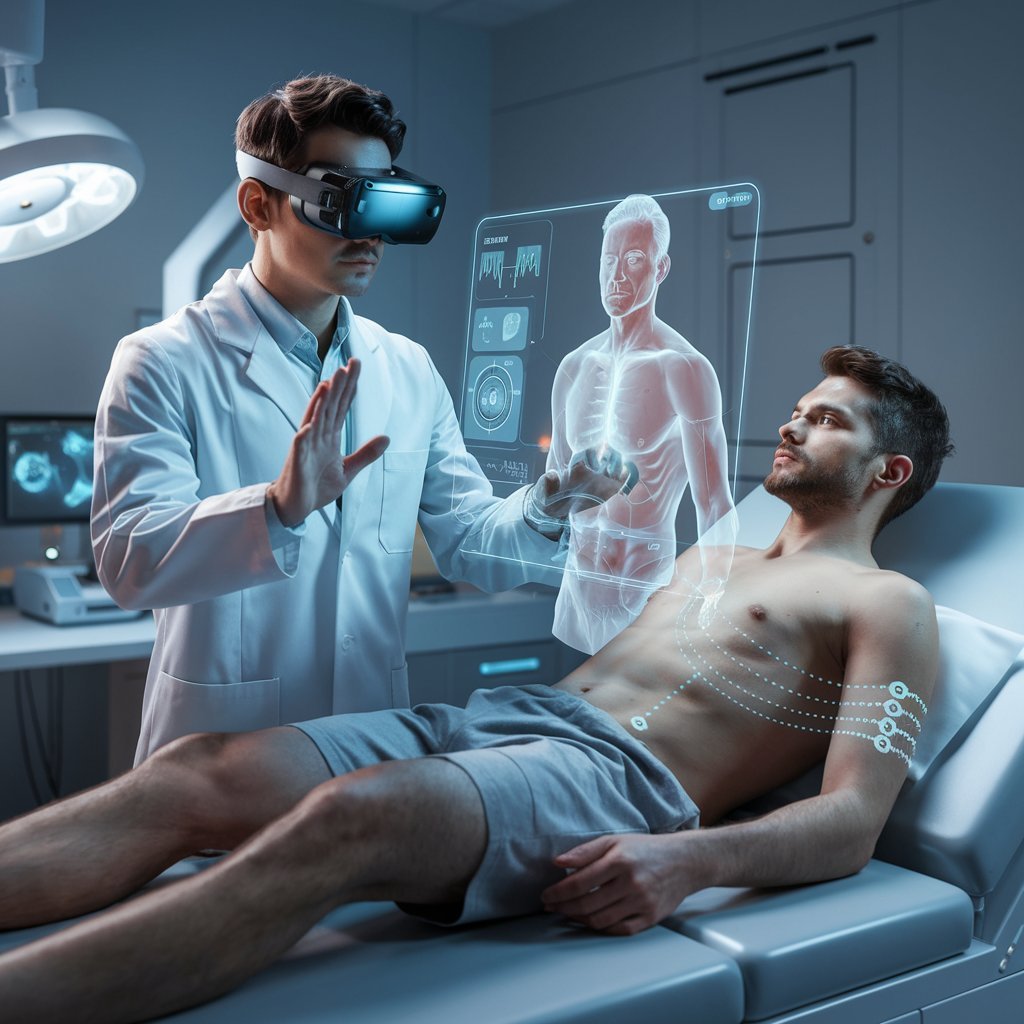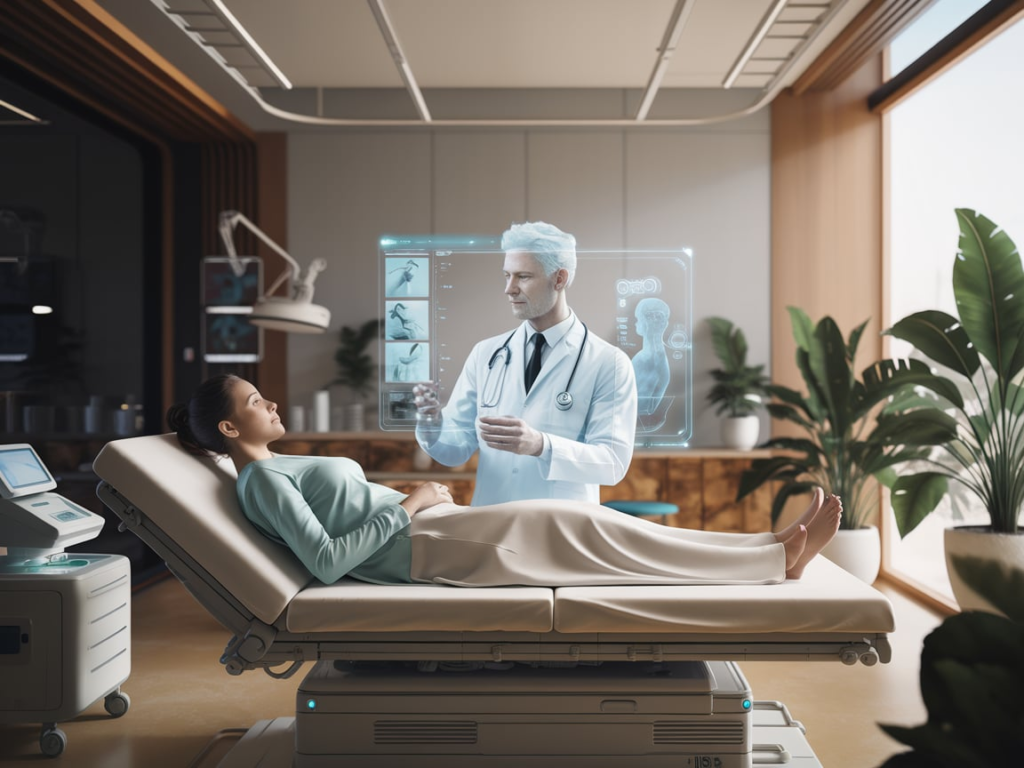
"Telemedicine in 2025: The future of healthcare is here, transforming access and care through cutting-edge technology."
Meta Description:
“Explore the future of telemedicine in 2025 and how it is transforming healthcare by improving access, enhancing patient care, and leveraging new technologies for better outcomes.”
Introduction
Telemedicine has come a long way in recent years, and as we approach 2025, it’s poised to revolutionize healthcare even further. What started as a convenience during the COVID-19 pandemic has evolved into a robust, integral part of modern healthcare systems. Thanks to rapid advancements in digital health technologies, telemedicine is now expanding far beyond basic video calls between doctors and patients. By 2025, we can expect telemedicine to be more personalized, efficient, and widely accessible than ever before.
In this article, we will explore how telemedicine is expected to evolve by 2025, the technologies driving this change, and the impact it will have on healthcare delivery worldwide.
The Evolution of Telemedicine

Telemedicine has rapidly expanded since its initial surge during the COVID-19 pandemic. However, its growth has not just been driven by necessity; it’s been powered by ongoing advancements in technology, healthcare infrastructure, and patient demand for more flexible, convenient care.
In the years following the pandemic, telemedicine quickly transitioned from an emergency solution to a long-term option for healthcare delivery. As of 2025, telemedicine is expected to become an essential part of everyday healthcare, offering both primary care and specialized services to patients around the world.
Technological Innovations Driving Telemedicine in 2025

The future of telemedicine will be marked by innovations that further enhance its effectiveness, efficiency, and accessibility. These technologies will make virtual care a seamless experience for both patients and healthcare providers.
AI-Powered Diagnostics & Virtual Consultations
By 2025, artificial intelligence (AI) will play an even more prominent role in telemedicine. AI algorithms will assist healthcare providers in diagnosing conditions more accurately and quickly. Through the analysis of patient data, AI can identify patterns that might be difficult for human doctors to detect. This could lead to earlier diagnoses and more personalized treatment plans, ultimately improving patient outcomes.
AI-powered tools like chatbots and virtual assistants will become more sophisticated, providing real-time assistance during virtual consultations, helping patients navigate their symptoms, and offering preliminary advice based on AI analysis.
- Read more about AI in healthcare on HealthIT.gov.
Remote Monitoring & Wearable Technology

Remote patient monitoring tools will continue to evolve, allowing healthcare providers to track patients’ health in real-time from a distance. By 2025, wearable devices will not only track basic metrics like heart rate, sleep patterns, and activity levels but also measure more complex health indicators like blood sugar, oxygen saturation, and even brain activity.
These devices, which will be more integrated with telemedicine platforms, will help doctors provide proactive care by identifying potential health issues before they become serious. For instance, continuous glucose monitors for diabetic patients, or wearable ECG monitors for heart disease patients, will allow real-time remote monitoring, making managing chronic conditions more efficient and less time-consuming.
- Explore wearables and remote monitoring at FDA’s Digital Health.
5G Networks and High-Speed Connectivity
The rollout of 5G networks will continue to accelerate by 2025, providing the high-speed, low-latency connections necessary to make telemedicine even more effective. With faster internet speeds, telemedicine consultations will feel more seamless, and doctors will be able to perform more complex virtual examinations with less delay.
5G will also facilitate the use of high-definition video consultations, reducing the lag and improving the quality of virtual interactions between doctors and patients. As more healthcare services become digitized, robust connectivity will be key to ensuring access for all, especially in underserved areas.
Virtual Reality (VR) & Augmented Reality (AR)
Virtual reality (VR) and augmented reality (AR) are set to revolutionize telemedicine by 2025, especially in areas like physical therapy, rehabilitation, and even surgery. Surgeons will use AR to perform remote-assisted surgeries, guiding procedures through 3D visualizations. VR will help patients in their recovery, offering virtual physical therapy sessions that simulate real-world activities and help improve mobility and strength.
These technologies will not only enhance patient care but also create new opportunities for medical training and education. Medical students and residents will be able to observe and even participate in virtual procedures, advancing their skills without the need for a physical presence.
- Learn more about VR and AR applications in healthcare from MedTech Europe.
Telemedicine’s Impact on Healthcare Accessibility in 2025

Telemedicine has already begun to address significant barriers to healthcare access, such as geographic isolation, cost, and availability of healthcare professionals. By 2025, telemedicine will have expanded its reach even further, particularly in rural and underserved areas.
Bringing Care to Underserved Communities
One of the biggest advantages of telemedicine is its ability to connect patients with healthcare providers, regardless of where they live. In 2025, rural and underserved populations will have greater access to specialized care, thanks to improvements in telemedicine infrastructure and the increasing availability of mobile healthcare solutions.
Telemedicine will also help bridge the gap in medical workforce shortages by enabling patients to consult specialists and primary care doctors virtually, reducing wait times and eliminating the need for travel.
Mental Health Care: Virtual Therapy and Counseling
Telemedicine has already had a profound impact on mental health care, allowing individuals to access therapy from the safety and comfort of their own homes. By 2025, telehealth services for mental health will be more widely available, with even more options for remote counseling, teletherapy, and online support groups.
Patients will be able to choose from a wider range of providers, and mental health professionals will continue to leverage telemedicine platforms to offer treatment for conditions like depression, anxiety, PTSD, and more.
- For more information on telemedicine for mental health, visit American Psychological Association.
Challenges and Opportunities in Telemedicine by 2025

While telemedicine presents exciting opportunities for both healthcare providers and patients, there are challenges that still need to be addressed in the coming years.
Privacy and Security Concerns
As telemedicine grows, so do concerns about patient privacy and data security. In 2025, robust cybersecurity measures will be crucial to protect sensitive health data. Innovations in blockchain technology may be used to provide more secure data-sharing methods, ensuring that patients’ personal and medical information is protected from cyber threats.
- Learn more about securing health data on HIPAA Journal.
Regulatory and Reimbursement Issues
Telemedicine regulations will continue to evolve to accommodate new technologies and methods of care delivery. By 2025, policymakers will need to create standardized rules for reimbursement, licensing, and insurance coverage across state and national borders. The challenge will be to ensure that telemedicine remains accessible to as many people as possible while maintaining regulatory compliance.
Addressing the Digital Divide
One of the biggest challenges in the future of telemedicine is ensuring equitable access to technology. In 2025, efforts must be made to bridge the digital divide by providing underserved populations with the necessary tools and connectivity to benefit from telemedicine services.
What to Expect in 2025: The Future of Telemedicine

By 2025, telemedicine will no longer be an optional or supplementary part of healthcare—it will be integral to the way healthcare is delivered globally. Expect greater integration with AI, machine learning, and remote monitoring tools. The doctor-patient relationship will evolve, with patients increasingly preferring flexible, accessible care through digital channels.
Telemedicine will continue to transform the healthcare landscape, ensuring that quality care is accessible to anyone, anywhere, anytime.
Conclusion
The future of telemedicine is incredibly exciting. By 2025, telemedicine will offer more personalized, efficient, and accessible healthcare than ever before. With the rise of AI, remote monitoring, and next-generation connectivity, healthcare providers will be able to offer better care to a wider range of patients, regardless of location or socioeconomic status.
As we look toward 2025 and beyond, telemedicine will remain a key pillar in shaping the future of healthcare, providing better outcomes for patients and more efficient solutions for healthcare providers worldwide.
Frequently Asked Questions (FAQs)
- What is telemedicine? Telemedicine refers to the practice of delivering healthcare services remotely through digital technologies, such as video calls, mobile apps, and online consultations.
- How will telemedicine evolve by 2025? By 2025, telemedicine will integrate advanced technologies like AI, remote monitoring tools, 5G connectivity, and virtual reality to offer more personalized and efficient healthcare services.
- What are the benefits of telemedicine for patients? Telemedicine allows patients to access healthcare services from the comfort of their homes, reducing wait times, eliminating travel barriers, and increasing access to specialists, particularly for underserved populations.
- Is telemedicine secure? While there are security concerns regarding the privacy of patient data, telemedicine platforms will continue to implement advanced encryption, AI-driven security protocols, and compliance with regulatory frameworks like HIPAA to protect patient privacy.
- What types of healthcare can be provided via telemedicine? Telemedicine can be used for a wide range of healthcare services, including primary care, mental health counseling, follow-up visits, chronic disease management, and specialized consultations in fields like dermatology and cardiology.
- How does 5G improve telemedicine? 5G networks provide faster internet speeds and lower latency, which enables high-definition video consultations, faster data sharing, and real-time monitoring of patient health, improving the overall telemedicine experience.





